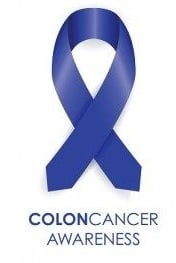Early detection of cancer saves lives. It is challenging, even in the best of times, to keep patients up to date on screening for certain conditions such as colon cancer, bowel cancer, and prostate cancer. A pandemic makes this process that much more difficult.
cancer, bowel cancer, and prostate cancer. A pandemic makes this process that much more difficult.
During COVID-19, many countries have decreased or suspended screening programs and diagnostic services in order to treat those with COVID-19 and to slow its spread among others. At the same time, patients still hesitate to set foot in the doctor’s offices, despite physicians’ attempts to make in-person visits as safe as possible. In June, the Commonwealth Fund reported that outpatient visits remained substantively lower than baseline, with the cumulative deficit in visits from March 15-June 20 totaling nearly 40 percent.
In March 2020, the Welsh government and the Scottish government suspended screening programs for breast cancer, cervical cancer and bowel cancer. In April, the Northern Ireland government followed suit.
The interim Chief Medical Officer for Scotland reported that urgent referrals of patients with cancer by primary care physicians had been reduced over 70% by mid-April. Similar reductions were reported in England, and. Cancer Research UK estimated this could mean around 2,000 fewer cancers diagnosed per week.
In the United States, the Centers for Medicare & Medicaid Services classified screening as a low-priority service this spring. In May, Epic Health Research Network reported that preventive screenings in the United States dropped 86% (colon cancer) and 94% (breast and cervical cancer). The number of cancer screenings did rise later. Still, June 16 weekly volumes remained 29%, 36%, and 35% lower than their pre-COVID-19 levels for breast cancer, colon cancer, and cervical cancer screenings.
As patient visits pick up, cancer screening should pick up as well. But before restarting screening programs, physicians need to consider the risks and benefits of screening, and work to ensure the safety of patients and healthcare personnel.
Step 1: Institute safety measures for patients
Experts suggest that practices adopt modified schedules – including longer hours – to avoid high patient volumes and density. Separate waiting areas should be designated for “well” and “sick” patients. Practices should set up Non-COVID Care (NCC) zones in which all patients are screened for symptoms of COVID-19. Staff should be routinely screened, as should all others in the facility, including housekeeping and delivery personnel. Patient companions should be limited to those whose participation in the appointment is absolutely necessary (e.g. parents of children, offspring, spouses or other companions of vulnerable adults).
Practices should require all individuals visiting the office to wear a cloth face covering. This expectation should be clearly explained to patients and other visitors before they arrive. Visitors and patients who arrive without a cloth face covering or mask should be provided one by the practice.
Step 2: Ensure workplace safety for clinicians and staff
Communicate personal health requirements clearly to clinicians and staff. For example, employees should know to stay home if they have a fever, have lost their sense of taste or smell, have other symptoms of COVID-19, or have recently been in direct contact with a person who has tested positive for it..
If possible, practices should consider rearranging open work areas to increase distances between people. Dedicated workstations and patient rooms can minimize the number of people touching the same equipment. Establish open communication with facilities management regarding cleaning schedules for shared spaces (e.g. kitchens, bathrooms), and reporting of COVID-19-positive employees.
Step 3: Screen wisely
Provider organizations might wish to explore alternative options to get patients caught up with cancer screening, such as the use of at-home stool-based tests for colon cancer screening or implementing risk-stratification methods to identify and prioritize patients at highest risk.
The “Keep Social Distancing, Stop Medical Distancing” initiative has been launched in the US. This encourages people not to delay seeing their doctor, and to discuss whether telemedicine or an in-person appointment is appropriate. It also reminds people that additional screening procedures have been implemented, appointment times are being staggered, and enhanced cleaning is being done for the safety of patients and staff everywhere.
The OSOM® iFOB Test is a rapid qualitative test for the immunochemical detection of fecal occult blood/human hemoglobin (hHb) in human fecal specimens.  This test is an aid in the diagnosis of gastrointestinal disorders, such as diverticulitis, colitis, polyps, and colorectal cancer. With no dietary or drug restrictions, the test improves patient compliance. In addition, it is:
This test is an aid in the diagnosis of gastrointestinal disorders, such as diverticulitis, colitis, polyps, and colorectal cancer. With no dietary or drug restrictions, the test improves patient compliance. In addition, it is:
- Analytical sensitivity: 50 ng hHb/mL buffer or 50 μg hHb/g feces.
- To human hemoglobin.
- Results in 5-10 minutes with less than 1 minute of hands on time.
- Easy to use patient sample collection procedure.



Share Article